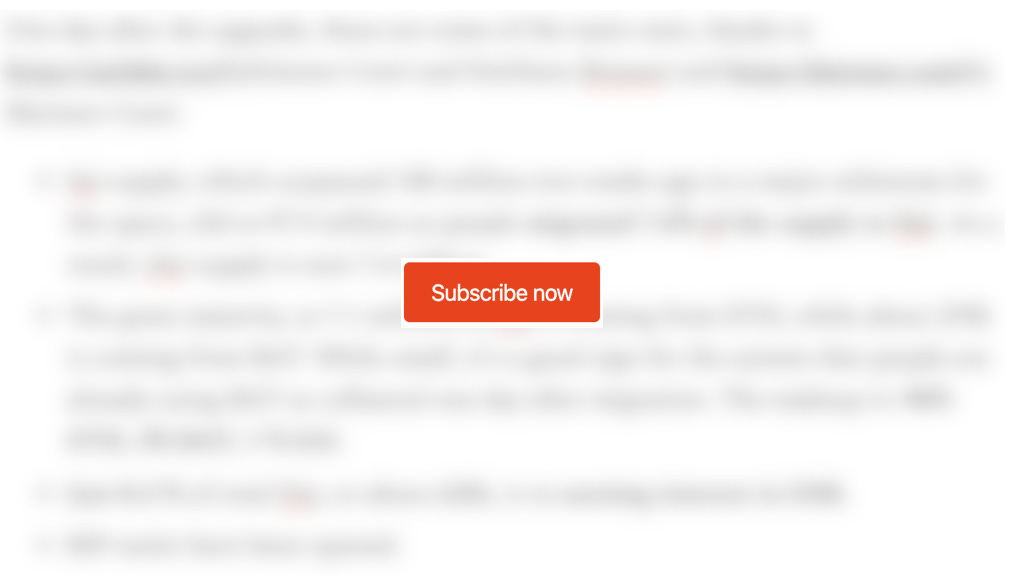DeFi's Central Bank is Becoming "Much Cooler"
MakerDAO is upgrading to Multi-Collateral Dai; what it means and why it matters.
Hello defiers! The major news in decentralized finance right now is MakerDAO’s upgrade into Multi-Collateral Dai, so I’m dedicating today’s Defiant to this development and why it matters.
Before I get into that, just a quick note: I was interviewed about DeFi at the Shift Money conference in Zagreb today, and it reminded me that most people even in fintech have no idea about this space. To me, it’s becoming increasingly clear that we’re witnessing the birth of the Internet of money and it’s wild that even those most likely to either be disrupted by it, or would benefit from it, aren’t paying attention. This inspired me to make today’s newsletter more accessible to the non-DeFi-fluent. Readers: Let me know if you like this pace/level of writing for future editions.
MakerDAO is Now “Much Cooler”
The DeFi central bank had a major overhaul yesterday.
MakerDAO yesterday upgraded its system to Multi-Collateral Dai (MCD), or as some would rather say, “Much Cooler Dai.” This means it now accepts collateral other than ETH to back Dai, its stablecoin. Dai in the old system is now called Single-Collateral Dai, or Sai. The collateral deposits, which were called Collateralized-Debt Positions in the old system, are now called “Vaults.” With this, the project’s vision from when it was first conceived in 2014 is being realized.
Why Does Dai Matter
Dai is an Ethereum-based ERC20 token, whose value is pegged at 1-to-1 to the dollar ($1 USD = 1 Dai). It’s backed by cryptocurrencies (up until Sunday, just ETH), not by government-issued currencies, which means it doesn’t rely on banks or regulators and it’s auditable in real time. It maintains its peg because it’s overcollateralized, which protects it against cryptocurrency’s volatility. Its monetary policy is decided by token holders, not by one centralized entity.
This means that anyone, anywhere can own an asset that’s pegged to the dollar, regardless of their local government’s or financial system’s policies and laws, and without needing to trust them. Dai can then be the gateway into a wide range of financial services, like earning interest and trading.

Image Source: sai2dai.xyz
Why Does MCD Matter
So why would MCD be much cooler. More types of collateral will in theory make the system more liquid and stable. The premise is that with just ether as collateral, Dai would always be limited by the amount of ETH in circulation. Also, it would be too reliant on ETH’s ups and downs and survival. If ETH suddenly lost most of its value, Dai would have to do an emergency shutdown. In the new system, liquidity constraints are loosened and collateral diversification should provide greater stability.
Brave browser’s BAT is the second collateral accepted after ETH. MKR token holders will vote on which other assets will be added. Right now, it’s arguable how much liquidity and stability tokens like BAT or Augur’s REP, which is in the running to become the third collateral type, actually add to the system. They’re both less liquid and more volatile than ETH. But they should be the first step in a bigger picture, where many different asset types are added.
Aside from the multi-collateral part, another major change is that DeFi users will get another option to put their money to work with the Dai Savings Rate, or DSR. MakerDAO now offers the ability for users to start earning interest on their Dai, within the Maker system –the interface to do this is a Dex called Oasis. Previously, you could earn interest on Dai by depositing it in other platforms like Compound, but Maker didn’t offer this option itself. There is no minimum deposit required, no fees, and users can withdraw their funds at any time.
Main Stats

Actions to Take

Sign up to get the best and only daily newsletter focusing on decentralized finance news, complete with analysis, exclusive interviews, scoops, and a weekly recap. Those who become paying subscribers in the current 60-day beta period which started Oct. 1 get an early supporter discount :)
About the author: I’m Camila Russo, a financial journalist writing a book on Ethereum with Harper Collins. I was previously at Bloomberg News in New York, Madrid and Buenos Aires covering markets. I’ve extensively covered crypto and finance, and now I’m diving into DeFi, the intersection of the two.


